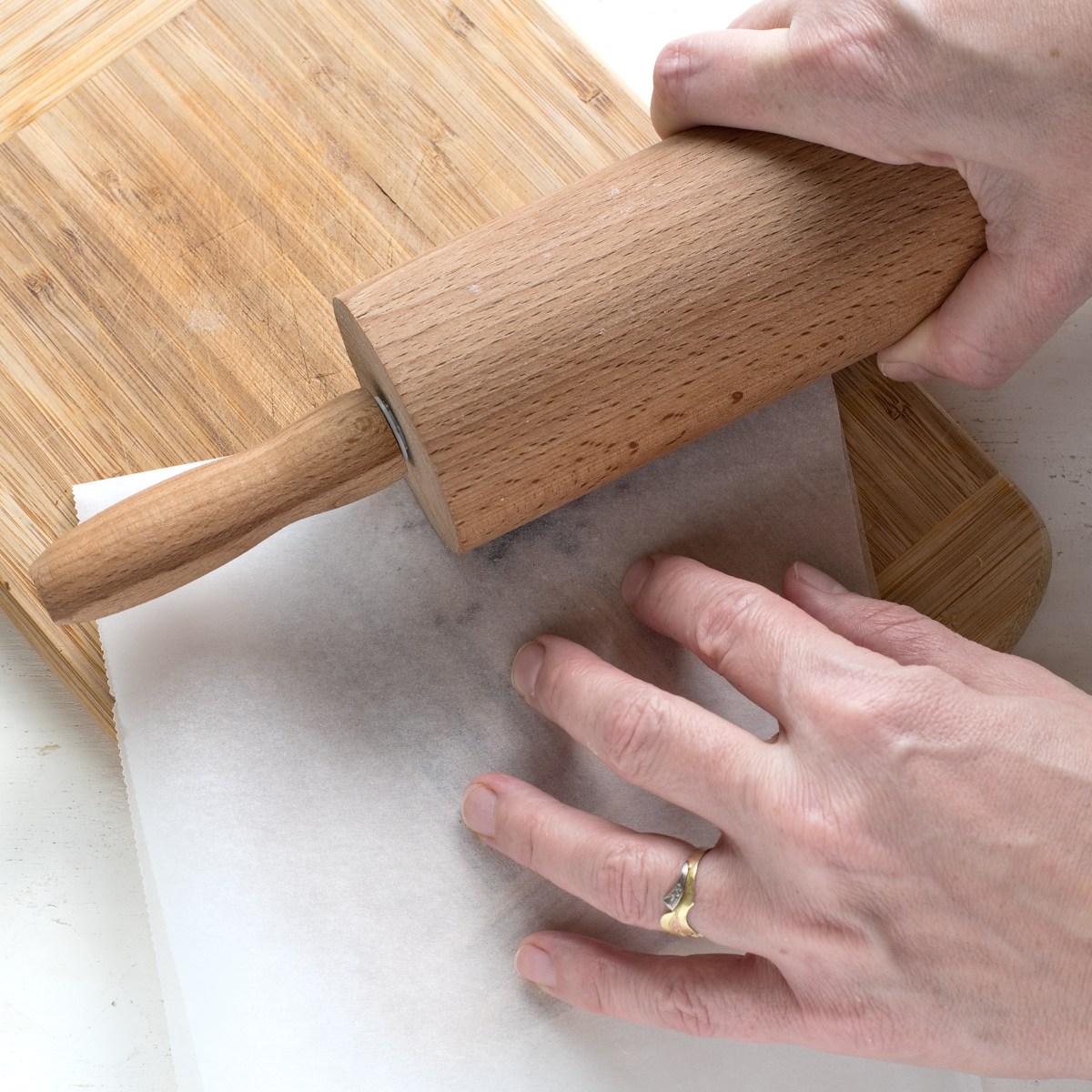What if I don’t have a spice grinder? No problem! You can grind spices without a grinder using several readily available kitchen tools and methods. This article will guide you through various spice grinding alternatives, manual spice grinding techniques, and DIY spice crushing methods, ensuring you can create spice powder, even without a grinder.

Image Source: www.cooklikeczechs.com
The Spice Dilemma: When You Need Ground, Not Whole
Spices add depth and flavor to our cooking. Sometimes, a recipe calls for freshly ground spices to unlock their full potential. But what happens when your spice grinder is out of commission, or you simply don’t own one? Don’t let that stop you! There are several efficient spice grinding alternatives you can use right in your kitchen.
Why Grind Spices Fresh?
- Enhanced Flavor: Freshly ground spices release oils and aromas that pre-ground spices lose over time.
- Increased Potency: Grinding spices just before use ensures maximum flavor impact.
- Control Over Texture: You can customize the fineness of the grind to suit your recipe.
- Avoiding Additives: Pre-ground spices sometimes contain fillers or anti-caking agents. Fresh grinding eliminates these additives.
Spice Grinding Alternatives: Your Kitchen Arsenal
Forget the specialized equipment; your kitchen is already full of tools that can double as spice pulverizing methods. Let’s explore some of the best ways to grind spices at home using common items.
The Classic: Mortar and Pestle Substitute
While a traditional mortar and pestle are ideal, many items can fill this role.
- How it Works: The mortar acts as a bowl, and the pestle is used to crush and grind the spices against the mortar’s surface.
- Suitable Spices: Works well for both whole and small spices like peppercorns, cumin seeds, coriander seeds, and cloves.
Finding Your Mortar and Pestle Substitute:
- Bowls: A sturdy ceramic or glass bowl can serve as the mortar. The smaller the bowl, the better for concentrating the grinding action.
- Pestles:
- Rolling Pin: Use the end of a rolling pin.
- Wooden Spoon: A sturdy wooden spoon handle works great.
- Meat Tenderizer: The flat side of a meat tenderizer can crush spices effectively.
- Heavy Mug: The base of a heavy mug can be used to grind spices.
- Method: Place a small amount of spice in your makeshift mortar. Apply downward pressure with your chosen pestle while twisting and grinding. Continue until the spices reach your desired consistency.
Blade-Based Solutions: Blenders and Food Processors
If you need to grind a larger quantity of spices or want a very fine powder, a blender or food processor can be a lifesaver.
- How it Works: The blades chop and pulverize the spices into a fine powder.
- Suitable Spices: Best for larger batches of spices, tougher spices like cinnamon sticks (broken into smaller pieces first), and achieving a very fine grind.
Blender or Food Processor: Guidelines
- Dedicated Blade: Ideally, use a separate blade attachment dedicated to spice grinding to avoid flavor transfer to other foods.
- Small Batches: Work in small batches to ensure even grinding.
- Pulse Action: Use the pulse function to control the grinding process and prevent overheating the spices.
- Cool Down: If grinding for an extended period, allow the blender or food processor to cool down to prevent damage.
- Clean Thoroughly: Clean the blender or food processor thoroughly after each use to prevent flavor contamination.
The Rolling Pin Technique: Crush Spices Without Tools
This method is excellent for quickly crushing spices or releasing their aroma before adding them to a dish.
- How it Works: Pressure from the rolling pin breaks down the spices.
- Suitable Spices: Works well for whole spices like peppercorns, cardamom pods, and coriander seeds.
Rolling Pin: Step-by-Step
- Preparation: Place the spices in a resealable plastic bag or between two sheets of parchment paper.
- Rolling: Lay the bag or parchment paper on a sturdy surface.
- Crushing: Use the rolling pin to apply firm, even pressure, rolling back and forth over the spices until they are crushed to your desired consistency.
The Ziploc Bag and Mallet: A Powerful Combination
This method provides more force than the rolling pin, making it suitable for harder spices.
- How it Works: The mallet delivers concentrated blows to crush the spices within the bag.
- Suitable Spices: Great for tougher spices like cinnamon sticks, nutmeg, and star anise (broken into smaller pieces).
Using a Ziploc Bag and Mallet:
- Preparation: Place the spices in a heavy-duty Ziploc bag. Seal the bag tightly, removing as much air as possible.
- Protection: Place the bag on a cutting board or other sturdy surface.
- Hammering: Use a mallet or meat tenderizer to strike the spices through the bag. Apply firm, controlled blows until the spices are crushed.
- Check and Repeat: Open the bag and check the consistency. Repeat the hammering process if needed.
Grater Power: Fine Spice Powder Creation No Grinder
A grater is excellent for grating whole spices into a fine powder.
- How it Works: Rubbing the spice against the grater’s surface creates a fine powder.
- Suitable Spices: Ideal for hard spices like nutmeg, cinnamon sticks, and ginger.
Grater Guidelines:
- Fine Grater: Use a fine grater, such as a microplane, for the best results.
- Safety: Be careful to avoid grating your fingers. Use a spice holder if available.
- Freshness: Grate only the amount of spice you need to maintain freshness.
Coffee Grinder as a Spice Grinder
A coffee grinder can be an excellent alternative spice grinding solution.
- How it Works: The blades grind the spices into a fine powder.
- Suitable Spices: Best for whole spices, such as cumin, coriander, fennel, and star anise.
Coffee Grinder Guidelines:
- Dedicated Grinder: Use a separate coffee grinder dedicated to spices to avoid flavor contamination.
- Small Batches: Work in small batches to ensure even grinding.
- Pulse Action: Use the pulse function to control the grinding process and prevent overheating the spices.
- Cool Down: If grinding for an extended period, allow the coffee grinder to cool down to prevent damage.
- Clean Thoroughly: Clean the coffee grinder thoroughly after each use to prevent flavor contamination.
Choosing the Right Method
The best method for grinding spices depends on several factors:
- Type of Spice: Hard spices like nutmeg and cinnamon sticks require more force (mallet, grater), while softer spices like peppercorns and cumin seeds can be ground with a mortar and pestle or rolling pin.
- Desired Consistency: If you need a very fine powder, a blender or food processor is your best bet. For a coarser grind, a mortar and pestle or rolling pin will suffice.
- Quantity: For small amounts, manual methods like the mortar and pestle or rolling pin are efficient. For larger batches, a blender or food processor is more practical.
- Available Tools: Consider the tools you have on hand. Experiment with different methods to see what works best for you.
Tips for Effective Grinding
No matter which method you choose, these tips will help you achieve the best results:
- Dry Spices: Ensure your spices are completely dry before grinding. Moisture can cause clumping and make grinding more difficult.
- Small Batches: Work in small batches to ensure even grinding and prevent overcrowding.
- Consistent Pressure: Apply even pressure when using manual methods like the mortar and pestle or rolling pin.
- Pulse Action: When using a blender or food processor, use the pulse function to control the grinding process.
- Cleanliness: Clean your tools thoroughly after each use to prevent flavor contamination.
- Storage: Store freshly ground spices in airtight containers in a cool, dark place to preserve their flavor and aroma.
Safety First
While grinding spices is generally safe, it’s important to take a few precautions:
- Sharp Tools: Be careful when using sharp tools like graters or knives (for breaking cinnamon sticks).
- Eye Protection: Wear eye protection when using a blender or food processor, especially when grinding hard spices.
- Dust: Avoid inhaling spice dust, which can be irritating to the respiratory system. Work in a well-ventilated area.
- Supervision: Supervise children when they are helping with spice grinding.
Fathoming the Nuances of Spice Selection
Not all spices are created equal. Selecting high-quality whole spices is the first step to achieving flavorful results.
- Appearance: Look for spices with vibrant color and a uniform appearance.
- Aroma: Smell the spices. They should have a strong, distinct aroma.
- Source: Purchase spices from reputable suppliers who prioritize quality and freshness.
- Storage: Store whole spices in airtight containers in a cool, dark, and dry place to preserve their flavor and aroma.
From Whole to Wonderful: Unleashing Flavor
Now that you’ve mastered the art of manual spice grinding techniques, it’s time to put your skills to the test! Here are some ideas:
- Homemade Spice Blends: Create your own custom spice blends for rubs, marinades, and seasoning mixes.
- Freshly Ground Seasonings: Grind spices fresh for soups, stews, sauces, and curries.
- Aromatic Oils: Infuse oils with freshly ground spices for a flavorful cooking medium.
- DIY Gifts: Package homemade spice blends or freshly ground spices as gifts for friends and family.
FAQ: Spice Grinding Without a Grinder
Can I use a hammer to grind spices?
Yes, you can use a hammer (or meat mallet) to crush spices. Place the spices in a Ziploc bag and hammer them on a sturdy surface.
What is the best way to grind small seeds like poppy seeds?
A mortar and pestle works best for small seeds.
Is it okay to use the same blender for spices and other foods?
It’s best to use a separate blender or blade attachment for spices to avoid flavor transfer. If you must use the same blender, clean it thoroughly after each use.
How do I clean my tools after grinding spices?
Wash tools with warm, soapy water. For stubborn odors, try soaking them in a solution of baking soda and water.
How long do freshly ground spices last?
Freshly ground spices will retain their flavor for about 3-6 months when stored in airtight containers in a cool, dark place.
Can I grind wet spices?
It’s generally not recommended to grind wet spices using these methods. It’s best to dry them first.

Hi, I’m Larry Fish, the mind behind MyGrinderGuide.com.. With a passion for all things kitchen appliances, I created this blog to share my hands-on experience and expert knowledge. Whether it’s helping you choose the right tools for your culinary adventures or offering tips to make your kitchen more efficient, I’m here to guide you. My goal is to make your time in the kitchen not only easier but also enjoyable! Welcome to my world of kitchen mastery!
